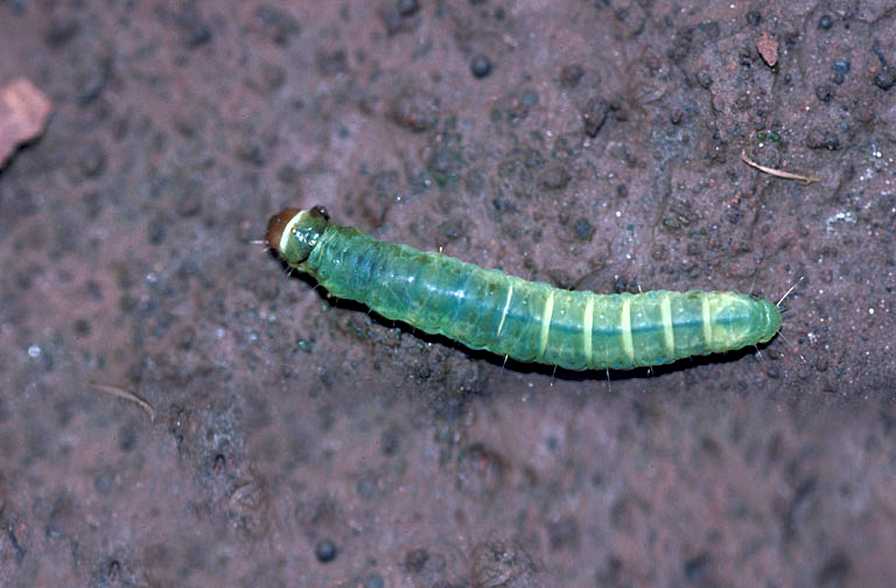Steer Your Crops Clear of Omnivorous Leafroller

The omnivorous leafroller attacks a wide range of species in more than 28 different plant families. Photo courtesy of Auburn University
This omnivorous leafroller (Platynota stultana) can be an occasional and sometimes serious pest of fruit and vegetable crops. It is known from Mexico. It has been recorded from California, Arizona, Hawaii, Texas, Florida, and Pennsylvania.
Economically important hosts include avocado, beans, celery, citrus sp., corn, cotton, lettuce, melons, mint, pepper, strawberry, and tomato. Changes in host plant preferences have been noted as the omnivorous leafroller has increased its range. It appears to have expanded its host plant range to a wider variety of non-native plants.
Identification
The adult, omnivorous leafroller is bell-shaped with blackish gray, snout-like mouthparts that protrude forward from the head. Forewings are dark, rusty brown with tan tips. Size varies from 3⁄8 to ½ inch in length.
The wing color can vary greatly. The color of the front wing is usually golden brown to dark brown. Male front wings are generally dark brown nearest the thorax and golden brown on half of the tip of the wing. The front wings on a female are more uniform color and markings are usually less distinct.
Mature larvae are approximately ½ inch long and translucent cream. The head and the top of the first segment of the thorax are yellowish brown to dark brown.
The omnivorous leafroller is similar in appearance to other species in the genus Platynota that are found in the Eastern U.S.
The omnivorous leafroller feeds on leaves, flowers, and fruits, often tying leaves together and feeding inside. The most significant damage occurs when feeding allows rot organisms to enter fruit at the damage sites. The omnivorous leafroller can be a serious pest in greenhouse production.
Survival and Spread
Omnivorous leafroller overwinters in the larval stage on weeds and other trash. In spring, larvae complete their development and moths emerge and lay shingle-like egg masses on foliage.
Eggs are laid in masses containing an average of 97 individual eggs. The green egg masses hatch in about a week, and the white, hatched egg masses become much easier to detect. After about 5 days, these eggs hatch and newly hatched larvae move toward the top of the plant and feed within a bud or web two young leaves together to form a nest in which they feed.
In warmer areas, adults may be present year-round and may produce four to six generations per year.
Management
More than 10 species of parasites have been recorded from omnivorous leafroller larvae. However, seldom does mortality from these parasites exceed 10%. Predators such as lacewings, minute pirate bugs, and spiders feed on young, omnivorous leafroller larvae.
Cultural and biological controls and sprays of Bacillus thuringiensis and the Entrust (Corteva) formulation of spinosad are helpful in organic production systems
Chemical treatments are necessary only when scouting indicates a need.
Consult UF/IFAS recommendations for currently labeled insecticides for worm control in Florida vegetables.










